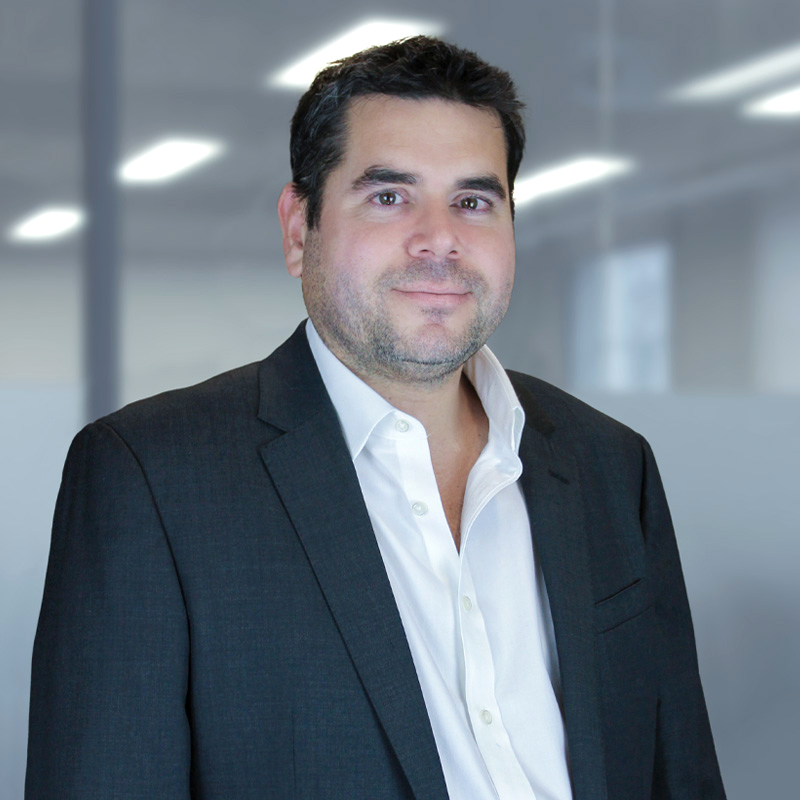Doing things differently
Jason Spilkin October 2024

Progressive Corporation (“PGR”) has always danced to its own tune. Its seemingly insular culture and differentiated strategy have driven extraordinary long-term results.
In many ways, the company is run more like a family business than a Fortune 500 corporation. PGR was founded by Jack Green and Joe Lewis as a mutual company in 1937. Joe’s son, Peter, and his mother, completed a leveraged buyout in 1965, converting the business into a corporation. PGR has had only five CEOs in its 87 years of existence – an average tenure of 17 and a half years. All of these have been “insiders”. Its current CEO, Susan “Tricia” Griffith, is a “lifer”. She joined way back in 1988 as a claims representative, fresh out of university, at the tender age of 24, before clawing her way up to the C-suite. All the while, she managed to balance work and family life, with her “very supportive” husband and six children.
In the early days, PGR found its niche underwriting the riskiest automobile policies - those which nobody else would touch. This meant quoting on teenagers, young men, the elderly, criminals, etc., which represented only 10-20% of the addressable market. Having cut its teeth with the trickiest clientele, PGR developed superior underwriting techniques.
Its underwriting prowess is evident today. For almost three decades, the company has consistently generated industry leading loss ratios, averaging some 4 percentage points better than peers. Even Warren Buffett, who controls its number one competitor, Geico, has praised PGR as having “the best operation…. in terms of matching price to risk…. that’s what insurance is all about”. PGR does not reveal all its secret sauce, but its underwriting has been highly innovative. For example, PGR pioneered the use of FICO scores (credit metrics) and were the earliest adopters of telematics (which includes installing monitoring devices on vehicles to transmit data to insurers).
By the mid-1990s, PGR was a big fish in a small pond of non-standard policy providers. The company risked running out of road in terms of addressable customers. Against this background, PGR pivoted into mainstream automobile policies, expanding its addressable market by roughly half. It sought to emulate Geico’s approach of selling “direct” to customers (as opposed to through agents), first over the phone and later over the internet. Direct policies can be more profitable because they cut out agents’ commissions (which are in the low teens in percentage terms), though the strategy requires much marketing spend (which agency does not), hence is more “scalable”. PGR’s first pivot has been a scintillating success; its market share mushroomed from about 2.5% in 1995 to approximately 14% by 2023.
More recently in the 20-teens, PGR pivoted a second time by “bundling” home insurance, which is often sold alongside automobile policies. Bundles represent the bulk of the addressable market and so it was able to expand to offer coverage to 100% of the auto market. PGR refers to bundled customers as “Robinsons” and claims that they are the most valuable due to greater policy life expectancy (loyalty) and less volatile margins. As part of the second pivot, PGR made a very small acquisition in 2015, which was widely panned at the time by the sell-side community. The target, American Strategic Insurance (“ASI”), was a home insurer based in Florida, which sold policies in the most disaster-prone states, where commentariat were convinced that few insurers should dare to venture. In hindsight, PGR’s modus operandi was clear. It was purchasing ASI’s savvy in underwriting the riskiest homes, just as the Lewis family had started out with the riskiest drivers before going mainstream. History often rhymes.
Despite the strategic pivots, PGR’s core strategy has remained consistent since its listing in 1971: to grow as fast as possible, subject to a maximum combine ratio of 96 (a minimum underwriting profit margin of 4%). The aptly named “combine ratio” is comprised of two components. Firstly, the “loss ratio” is indicative of underwriting expertise since it measures payouts to policy holders. Secondly, the “expense ratio” shows the operating efficiency.
However, the expense ratio is in fact comprised of two very different sub-components: overhead costs (running the business) and marketing costs (growing the business). To distinguish between these two, PGR refers to the overhead component as the “non acquisition expense ratio” and the marketing component as the “acquisition expense ratio”. Whereas PGR’s combine and loss ratios have been consistent over time, there has been a significant change in the makeup of its expense ratio; whereby a steady decline in the “non-acquisition expense ratio” (economies of scale) has been offset by an increased investment in customer acquisition, which has accelerated growth.
You cannot reap where you do not sow. Profitability is only relevant to the extent incremental capital can be put to work, growing the number of policies and premiums in force. Warren Buffett fittingly refers to return on equity (“ROE”) as “earnings power” because it measures the (latent) potential for growth. The other critical component to catalyse growth is the “retention ratio”, which measures how much capital is reinvested as opposed to being returned to shareholders through dividends. By way of an example, if a company returns 100% of annual earnings to shareholders, then it cannot grow book value and shareholders returns will equal the dividend yield, just like owning a perpetuity. Conversely, if all the capital were reinvested at the ROE, then book value grows and compounds at the ROE.
The insurance cycle mean reverts between “hard” and “soft” markets (in terms of profit margins). “Adverse selection” is a perennial problem. Growing premiums to meet short term targets into a soft market is futile, since any resultant losses would erode the capital base. You cannot underwrite what your balance sheet “ballast” cannot support. Indeed, there are regulatory capital adequacy requirements which must be met. The balance sheet is the foundation which supports sustainable growth. Equally, in a hard market, when superior returns are on offer, it makes sense to aggressively grow premiums and compound capital. The 96-combine ratio is PGR’s “north star”, which guides its underwriting discipline. The company has not breached it since 2001 and has proven willing to cut marketing expenses to the bone if necessary to meet it, as it did last year.
PGR is the only company we know of that releases monthly accounts (P&L). Hence, quarterly earnings calls are typically a non-event. Whereas most companies focus on recent results and the outlook for the coming quarter, PGR devotes time twice annually to an investor event where it presents some of its strategic goals and the competitive advantages, which it intends to leverage to achieve those goals.
At the company’s most recent investor event in August 2024, the topic was direct marketing. PGR sought to convince the crowd that it had solved the “Wanamaker dilemma” of optimising media spend. According to John Wanamaker, “half the money I spend on advertising is wasted; the trouble is I don’t know which half”. However, PGR postulates, “investors should feel confident that when we invest a dollar in media, it’s a dollar well spent.” The presentation delved in detail into the direct marketing machine it has built over the past 30 years. Uniquely in the industry, it has an in-house media buying team, which would be difficult for any competitor today to replicate from scratch. That decision made three decades ago, ahead of its direct pivot, has many advantages over an external agency. For example:
- Specialisation: selling a single brand and product which it knows very well.
- Alignment of incentives: the media team’s bonus is linked to PGR’s performance, whereas an external agency is incentivised to bill, like a barber telling you that you need a haircut.
- Leveraging internal data and analytics, which would be off-limits to third party agencies, to optimise media spend.
- Economies of scale: marketing overhead costs are much lower than an equivalent external agency. Crucially, it is scalable.
The evidence of economies of scale is overwhelming. Notwithstanding PGR tripled media spend from 2015 to 2019, increasing it from 10% of industry spend to some 20%, it had no detrimental impact on its combine ratio. PGR successfully leveraged its non-acquisition expenses and recycled this into customer acquisition costs. Moreover, the bigger PGR gets, the further entrenched this scale advantage becomes and the more the company can reallocate from running the business to growing it. PGR’s marketing machine is marauding. In July 2024, at the ripe old age of 87 years old, PGR’s “policies in force” grew by 11%, exposing its marketing mojo. Though the auto insurance market overall is mature, PGR has a long-term opportunity to consolidate market share. It has ~15% share today and is growing this at ~1% per annum. It benefits from secular tailwinds, over indexing to the fast-growing direct channel (~25% share), to benefit over time as younger cohorts, who are more inclined to buy policies online, get older.
PGR seems a “structural winner” due to a trifecta of superior underwriting, economies of scale and marketing nous. Every percentage point of market share the company gains in altitude, further thins the oxygen available to competitors. Winners do not necessarily do different things. They do things differently.
This communication does not constitute an investment advertisement, investment advice or an offer to transact business. The information and opinions expressed in this communication have been compiled from sources believed to be reliable. None of Credo, its directors, officers or employees accepts liability for any loss arising from the use hereof or reliance hereon or for any act or omission by any such person or makes any representations as to its accuracy and completeness. Any opinions, forecasts or estimates herein constitute a judgement as at the date of this communication. Credo Capital Limited is a company registered in England and Wales, Company No: 03681529, whose registered office is 8-12 York Gate, 100 Marylebone Road, London, NW1 5DX. Authorised and regulated by the Financial Conduct Authority (FRN:192204). © 2025. Credo Capital Limited. All rights reserved.




